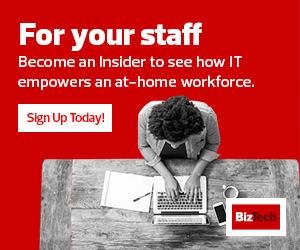Knowledge Gap, Identity Management Need to Be Security Priorities
One of the bigger challenges that small businesses face is a lack of information. Smaller organizations often have smaller IT teams, sometimes just a few employees. Those employees are often asked to serve multiple roles, which can lead to security being pushed to the back burner. When employees are stretched thin, it also makes it more difficult to have a resource completely dedicated to security.
Even for organizations that value expertise on their IT team, attracting security talent can be a challenge. According to Clearance Jobs, a new Cyberseek report showed 166,000 openings for information security analysts between October 2019 and September 2020, but only 125,570 employees working in such positions. This talent gap can make it difficult for small businesses to lure in new employees, who may be able to get more enticing compensation from other organizations.
While talent is an ongoing challenge in our current circumstances, there’s another threat that is more directly correlated to the era of remote and hybrid work environments: identity.
Employees connecting to small business networks from home are vulnerable, as home Wi-Fi systems may not have the same safeguards that on-premises networks have. Identity management becomes critical in such an environment, as businesses need to ensure that those who access the network are who they say they are.
It’s also key to manage what authorized users can access. Employees need to work with certain files and applications to do their jobs, but it’s important to limit their access to data they don’t need. That way, even if they are compromised, critical parts of the infrastructure won’t be breached.
DISCOVER: Explore the tech trends that will shape 2021 for small businesses.
Security Tools SMBs Should Consider in 2021
These challenges may seem daunting, but there are both emerging technologies and traditional tools that can help small businesses limit their risks in 2021. Two-factor authentication has been available for a long time, but many businesses still haven’t taken advantage of it. Along with single sign-on, two-factor authentication can go far in ensuring that only the right people are accessing your network.
Emerging solutions are appearing for these unique work environments: Secure access service edge is an architecture for remote users that allows safe access to applications and information, integrated right into the infrastructure. SASE also provides additional visibility into these complex environments, allowing IT professionals to monitor their architecture.
That visibility has grown particularly cumbersome in the remote work era. Organizations have made so many IT additions and adjustments that many environments are more complex than ever. Each of those tools presents a new opportunity for hackers to dismantle the system. Using a cloud security posture management tool such as CDW’s Cloud Check can show small businesses where they are unprotected, allowing them to fix problems before they are exploited.
The best way for small businesses to access new solutions is by connecting with experts who can point them in the right direction. Organizations that don’t have the resources to employ an in-house security expert can outsource the task to ensure they’re up to date with the latest protections.
This article is part of BizTech's AgilITy blog series. Please join the discussion on Twitter by using the #SmallBizIT hashtag.












